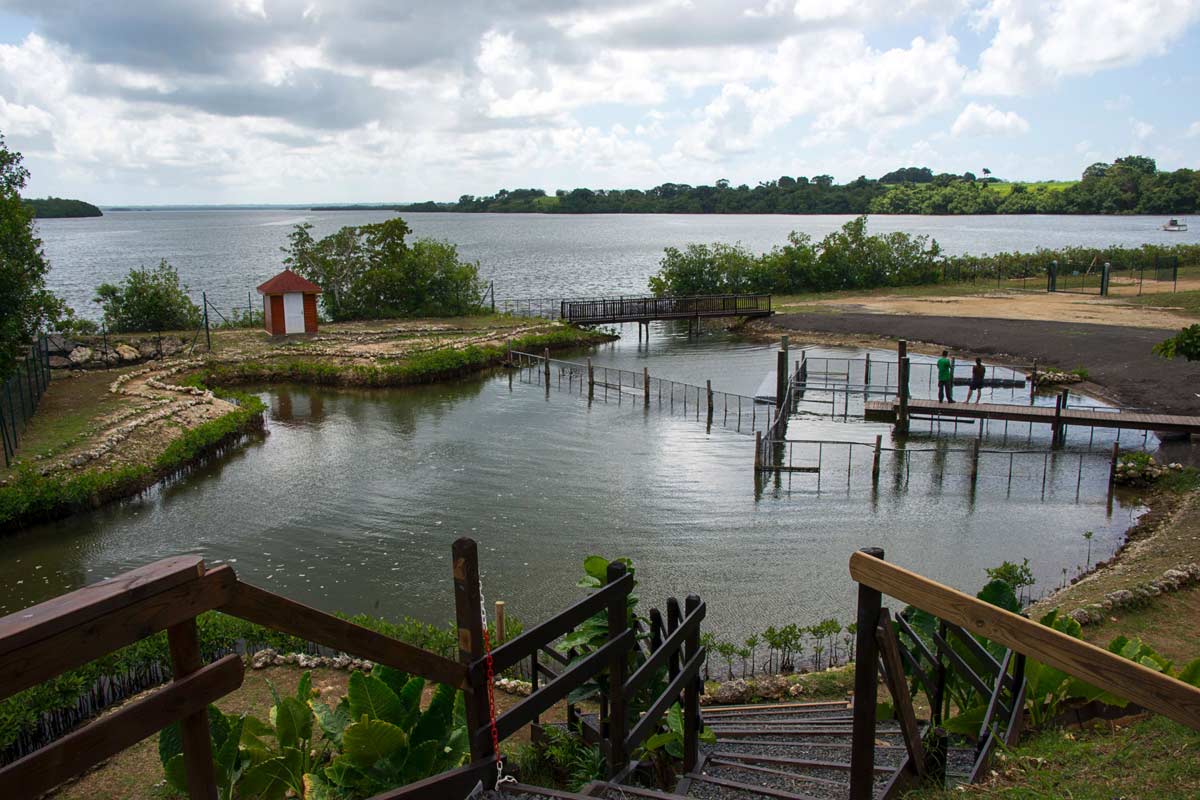When Junior the manatee first lifted its nostrils out of the water after it was released into its new Caribbean enclosure, the humans watching with bated breath remembered to breathe as well.
Its best friend, Kai, also surfaced to similar cheers of whoops, claps and exclamations of “voila!”.
The Caribbean island grouping of Guadeloupe, a French overseas territory, is now home to the two gentle giants.
The two West Indian manatees from Singapore have settled down well in the brackish waters of the National Park of Guadeloupe, after their arduous 34-hour journey last month.
The bachelors are now ready to receive their harem – 10 females which will soon join them from other zoos.
Kai and Junior’s arrival is the culmination of a decade-long effort to reintroduce the threatened aquatic giants, which have disappeared in Guadeloupe, to the region.
Six-year-old Junior and seven-year-old Kai are part of the world’s first manatee repopulation programme that aims to bring their kind back to the Caribbean region, where they were hunted to extinction in the early 1900s.
The hope is that the duo, as well as 13 other manatees – 10 of them female – which will be joining them over the next five years, could help repopulate the region.
The manatees will be kept within a 15,000ha naturalised enclosure within the park, but their offspring will be introduced into the wild.
The national park has said that the project could have important and widespread regional impact for improved conservation.
Mr Keith So, 40, deputy head aquarist at the River Safari, where Junior and Kai grew up, accompanied the marine mammals on the 19,600km voyage from Singapore to Guadeloupe.
Video credit: Wildlife Reserves Singapore
He said the animals were calm during the flight and did not have to be sedated.
The whiskered herbivores made the journey on a chartered flight in sponge-lined crates, with an entourage of two veterinarians and a keeper.
Said Mr So: “After the vet checks, Junior and Kai were released into the enclosure. It was a new environment for them and they swam around exploring.
“When they took their first breath, everyone was so relieved!”
Manatees are marine mammals and need to surface to breathe, said Mr So. “It was important for them to surface to breathe, or they may drown due to the stress of a new environment,” he said.
Mr So and his colleague, Ms Doris Su, 28, also spent about two weeks in Guadeloupe to make sure that the manatees settled in well.
Said Ms Su: “Everything happened really fast. Kai and Junior were still swimming around in River Safari the day before, and two days later, they were swimming under the Caribbean sun.
“I was very relieved when they were released back into the water, and when they started to eat well again, I knew they were all right.”
But getting the manatees ready for the adventure of their lifetime took much longer.
The team started a training regime for them from June to make the journey as stress-free as possible.
Mr So said: “The manatees get scared easily, and would get stressed out whenever new objects are introduced into their tank.
“Since we needed to transport them using canvas sheets, we had to introduce (the sheets) to them slowly, and with positive reinforcement.”
Read also: Baby manatee abandoned from birth becomes River Safari animal icon
The keepers first left edges of the canvas sheet in the tank during feeding time – the manatees’ favourite part of the day – before putting the whole sheet in the water. They also fed the animals high-fibre biscuits as a treat and spoke to them calmly and gently.
“Manatees are very intelligent.
“They can tell if the trainer is stressed, so it’s important for the handler to be calm when working with them as well,” said Mr So.
It was also important that the gentle giants learnt how to follow targets held by their trainers.
This would allow Kai, at 662kg, and Junior, at almost half a tonne, to be separated from the 12 other manatees in the same enclosure at the River Safari.
This training was done with the help of treats: The manatees were rewarded with a biscuit whenever they followed their targets.
The training helped with the crating process on Aug 7, which went smoothly as the more than 30 keepers and handlers involved in the move communicated well, said Mr So.
Ms Su had a tender moment with Junior that day.
She had entered the holding tank just before the crating process began, and Junior greeted her by nudging her belly with his snout, Ms Su said.
“It seemed like he was asking me what was happening. I could only hold his head and gave him a really big kiss for assurance. He let go and swam away after that,” said Ms Su.
“It was painful to hear the closing of the aircraft cargo door when I was at the airport and heartbreaking to see the plane take off,” added Ms Su, who flew to Guadeloupe on a different flight.
“At that point, I finally accepted the fact that they were not coming back.
“But there is a bigger purpose for them, and I am proud that they are part of the founding group to repopulate a manatee-extinct region.”
audreyt@sph.com.sg

This article was first published on September 02, 2016.
Get a copy of The Straits Times or go to straitstimes.com for more stories.
























































